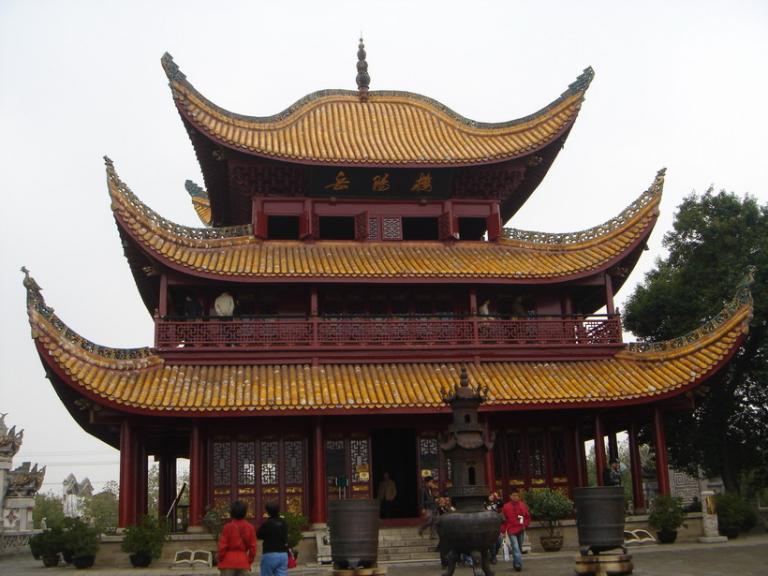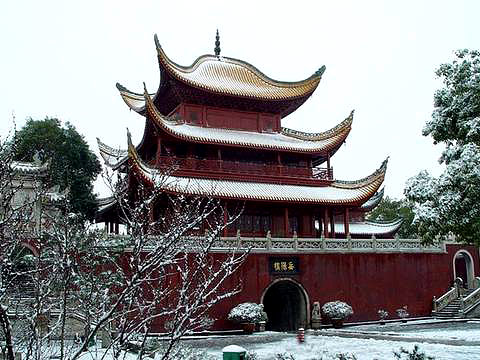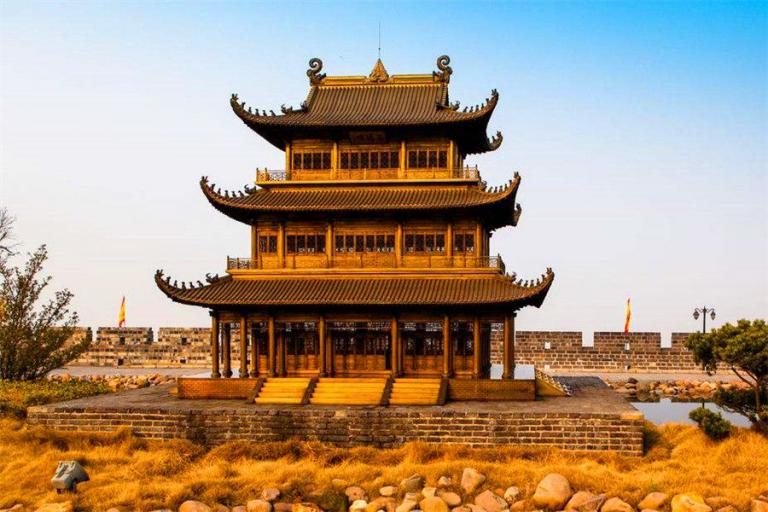Famous Ancient Towers in China
4 min readYueyang Tower,Yellow Crane Tower,Tengwang Pavilion and Penglai Pavilion are the four famous towers in China,whose unique architectural styles are of great significance in understanding the architectural style and characteristics of ancient China.

Yueyang Tower
The Yueyang Tower,standing on the west gate of the Yueyang city wall,looking down at the Dongting Lake,facing the Junshan Island in the distance,and linking the Yangtze River to the north and the Xiangjiang River to the south,is listed as one of the Three Great Towers in the south of Yangtze River,along with the Yellow Crane Tower in Wuhan,and the Tengwang Pavilion in Nanchang.It has long enjoyed the reputation of being the“first tower under heaven”,as the Dongting Lake is known as the”first water under heaven”.
It is said that Yueyang Tower was originally built for soldiers to rest on and watch out.In the Three Kingdoms Period,Lu Su,General of Wu State,trained his soldiers here and then rebuilt it as a tower for troop inspection.
In the fourth year(716)of Kaiyuan of Tang Dynasty,General Zhangshuo was dispatched to defend at Yuezhou and he rebuilt it into a tower named South Tower,and then Yueyang Tower.After that,many famous poets such as Du Fu,Han Yu,Liu Yuxi,Bai Juyiand Lishangyin went there and leave many famous poems that made Yueyang Tower well known anda famous tower around China.
In the fourth year(1044) of Qingli of Song Dynasty, Teng Zijing was stationed at Baling Jun, the ancient name of Yueyang city. In the second year, he renovated the Yueyang Tower and invited his good friend Fan Zhongyan,a well-known writer, to compose an essay. In Fan’ sessay, Remarks of Yueyang Tower, he not only described the wonderful scenery, but also wrote the famous lines of one should be the first to bear hardship, and the last to enjoy comforts, indicating his concerns for the country and people. His words were applauded and won the Tower greater fame, and have been deeply rooted in the Chinese people’s mind from generation to generation. After numerous renovations, the current structure was rebuilt in 1867 in the Qing Dynasty.
The Yueyang Tower has its special architectural features. Its main building has threestories and is 15 meters in height, with four huge Nanmu pillars supporting the whole building, twelve round log columns supporting the second floor, and another twelve catalpa pillars supporting the roof. Constructed of wood with interlocking brackets that require no nails, the main building is as steady as a monolith. Its roof looks like a general’s helmet, grand and unique, which together with the pure wooden construction reflects the unique style and great achievement of ancient Chinese architecture.

The display of the Tower has its own style with the couplets by famous poets or calligrapher through ages hung on the columns of each storey. Fan Zhongyan’s Remarks of Yueyang Tower is inscribed on the wooden screen on the first and second floor of the Tower. The Remarks on the first floor is a copy from the 19th century. Housed on the second floor isa wooden screen written by famous calligrapher Zhang Zhao of the Qing Dynasty, whose handwriting is unique in style, varied in skill, and square in shape. Du Fu’s On Yueyang Toweris inscribed on the screen of the third floor which is written by Chairman Mao, whose strong handwriting has added glitters to the Tower.
Two pavilions: Thrice Drunken Pavilion and Fairy Plum Blossom Pavilion are located beside the main building, which show up to advantage with the main building. The Thrice Drunken Pavilion, on the right side of the building, was originally built for sacrificing Charles’
Wain, and accordingly called Wangxian Pavilion and changed to Doumu Pavilion later. The present name, Thrice Drunken Pavilion was named in 1987 when it was rebuilt after a legend describing Immortal Lii Dongbin who was attracted by the beautiful scenery here and got drunk here three times. The Fairy Plum Blossom Pavilion, on the left side of the main building, was built in the 12th year of Chongzhen of Ming Dynasty(1639). It is said that a flagstone was excavated during the construction of the pavilion and the lines on the stone resembled withered plum blossoms, which were regarded as hand drawings of immortals. After the pavilion was completed, the flagstone was erected in the center of the Pavilion and is stilltoday, which is the reason why the pavilion called Fairy Plum Blossom Pavilion. The pavilion, exquisite and elegant, is 60 meters high, two-storey and is hexagonal with six upturned eaves supporting spire roofs.









